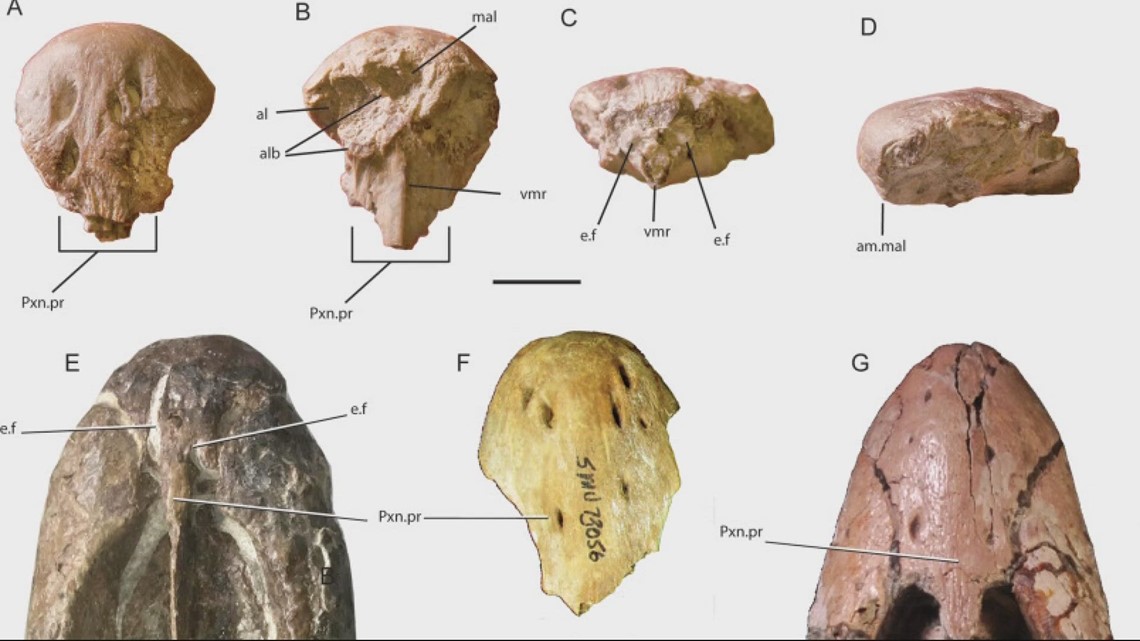JACKSONVILLE, Fla. — The world was a drastically different place 90 million years ago, and Saturday on Good Morning Jacksonville, UNF faculty member Dr. Barry Albright gave viewers a glimpse into what life was like when he described a discovery he made recently.
Albright was part of a team that found fossils of a 94-million-year-old mosasaur, which is an extinct marine reptile whose closest living relative is a monitor lizard and lived during the time of the dinosaurs.
"The one we found, indicates that it was fully marine adapted," said Albright. "And the way we were able to determine that, there were enough pieces of the skull to determine that the circulatory system in the skull, was already adapted to dealing with the pressures of being a fully marine adapted reptile."
Albright says the fossils of the mosasaur they found, is estimated to have been about 7-foot long. He adds that toward the extinction of dinosaurs, mosasaurs evolved into 40 to 50-feet long creatures.
The research team that Albright was part of, dug in the Glen Canyon National Recreation Area in southern Utah and was led by the Bureau of Land Management. Utah, a state with a typical dry, desert climate, wouldn't normally be considered a place where a marine habitat lives but, Albright says it was once a place that thrived with much sea life.
"So, there was this big seaway that extended from the Gulf of Mexico through the middle of North America, all the way to the Arctic Ocean," Albright told First Coast News. "It was its widest at about 93 [or] 94 million years ago and it slowly shrank and dried up over the next 30 million years or so."
More information about what was found and how the mosasaur evolved over time can be found here.







